![实验设计和分析 [Design and Analysis of Experiments]](https://pic.tinynews.org/10184608/862ddf12-8aa8-4c9e-b330-528ac96f0b55.jpg)

具体描述
内容简介
Principles and Techniques、Design: Basic Principles and Techniques、The Art of Experimentation、Replication、Blocking、Randomization、Analysis: Basic Principles and Techniques、Planning Experiments、A Checklist for Planning Experiments、Real Experiment——Cotton-Spinning Experiment等等。内页插图
目录
Preface1. Principles and Techniques
1.1. Design: Basic Principles and Techniques
1.1.1. The Art of Experimentation
1.1.2. Replication
1.1.3. Blocking
1.1.4. Randomization
1.2. Analysis: Basic Principles and Techniques
2. Planning Experiments
2.1. Introduction
2.2. A Checklist for Planning Experiments
2.3. A Real Experiment——Cotton-Spinning Experiment
2.4. Some Standard Experimental Designs
2.4.1. Completely Randomized Designs
2.4.2. Block Designs
2.4.3. Designs with Two or More Blocking Factors
2.4.4. Split-Plot Designs
2.5. More Real Experiments
2.5.1. Soap Experiment
2.5.2. Battery Experiment
2.5.3. Cake-Baking Experiment
Exercises
3. Designs with One Source of Variation
3.1. Introduction
3.2. Randomization
3.3. Model for a Completely Randomized Design
3.4. Estimation of Parameters
3.4.1. Estimable Functions of Parameters
3.4.2. Notation
3.4.3. Obtaining Least Squares Estimates
3.4.4. Properties of Least Squares Estimators
3.4.5. Estimation ofo2
3.4.6. Confidence Bound for ~r2
3.5. One-Way Analysis of Variance
3.5.1. Testing Equality of Treatment Effects
3.5.2. Use of p-Values
3.6. Sample Sizes
3.6.1. Expected Mean Squares for Treatments
3.6.2. Sample Sizes Using Power of a Test
3.7. A Real Experiment——-Soap Experiment, Continued
3.7.1. Checklist, Continued
3.7.2. Data Collection and Analysis
3.7.3. Discussion by the Experimenter
3.7.4. Further Observations by the Experimenter
3.8. Using SAS Software
3.8.1. Randomization
3.8.2. Analysis of Variance
Exercises
4. Inferences for Contrasts and Treatment Means
4.1. Introduction
4.2. Contrasts
4.2.1. Pairwise Comparisons
4.2.2. Treatment Versus Control
4.2.3. Difference of Averages
4.2.4. Trends
4.3. Individual Contrasts and Treatment Means
4.3.1. Confidence Interval for a Single Contrast
4.3.2. Confidence Interval for a Single Treatment Mean
4.3.3. Hypothesis Test for a Single Contrast or Treatment Mean
4.4. Methods of Multiple Comparisons
4.4.1. Multiple Confidence Intervals
4.4.2. Bonferroni Method for Preplanned Comparisons
4.4.3. Scheff6 Method of Multiple Comparisons
4.4.4. Tukey Method for All Pairwise Comparisons
4.4.5. Dunnett Method for Treatment-Versus-Control Comparisons
4.4.6. Hsu Method for Multiple Comparisons with the Best
reatment
4.4.7. Combination of Methods
4.4.8. Methods Not Controlling Experimentwise Error Rate
4.5. Sample Sizes
4.6. Using SAS Software
4.6.1. Inferences on Individual Contrasts
4.6.2. Multiple Comparisons
Exercises
5. Checking Model Assumptions
5.1. Introduction
5.2. Strategy for Checking Model Assumptions
5.2.1. Residuals
5.2.2. Residual Plots
5.3. Checking the Fit of the Model
5.4. Checking for Outliers
5.5. Checking Independence of the Error Terms
5.6. Checking the Equal Variance Assumption
5.6.1. Detection of Unequal Variances
5.6.2. Data Transformations to Equalize Variances
5.6.3. Analysis with Unequal Error Variances
5.7. Checking the Normality Assumption
5.8. Using SAS Software
5.8.1. Using SAS to Generate Residual Plots
5.8.2. Transforming the Data
Exercises
6. Experiments with Two Crossed Treatment Factors
6.1. Introduction
6.2. Models and Factorial Effects
6.2.1. The Meaning of Interaction
6.2.2. Models for Two Treatment Factors
6.2.3. Checking the Assumptions on the Model
6.3. Contrasts
6.3.1. Contrasts for Main Effects and Interactions
6.3.2. Writing Contrasts as Coefficient Lists
6.4. Analysis of the Two-Way Complete Model
6.4.1. Least Squares Estimators for the Two-Way Complete Model
6.4.2. Estimation ofo~ for the Two-Way Complete Model
6.4.3. Multiple Comparisons for the Complete Model
6.4.4. Analysis of Variance for the Complete Model
6.5. Analysis of the Two-Way Main-Effects Model
6.5.1. Least Squares Estimators for the Main-Effects Model
6.5.2. Estimation ofa2 in the Main-Effects Model
6.5.3. Multiple Comparisons for the Main-Effects Model
6.5.4. Unequal Variances
6.5.5. Analysis of Variance for Equal Sample Sizes
6.5.6. Model Building
6.6. Calculating Sample Sizes
6.7. Small Experiments
6.7.1. One Observation per Cell
6.7.2. Analysis Based on Orthogonal Contrasts
6.7.3. Tukeys Test for Additivity
6.7.4. A Real Experiment——Air Velocity Experiment
6.8. Using SAS Software
6.8.1. Contrasts and Multiple Comparisons
6.8.2. Plots
6.8.3. One Observation per Cell
Exercises
7. Several Crossed Treatment Factors
7.1. Introduction
7.2. Models and Factorial Effects
7.2.1. Models
7.2.2. The Meaning of Interaction
7.2.3. Separability of Factorial Effects
7.2.4. Estimation of Factorial Contrasts
7.3. Analysis——Equal Sample Sizes
7.4. A Real Experiment——Popcorn-Microwave Experiment
7.5. One Observation per Cell
7.5.1. Analysis Assuming That Certain Interaction Effects Are egligible
7.5.2. Analysis Using Normal Probability Plot of Effect Estimates
7.5.3. Analysis Using Confidence Intervals
7.6. Design for the Control of Noise Variability
7.6.1. Analysis of Design-by-Noise Interactions
7.6.2. Analyzing the Effects of Design Factors on Variability .
7.7. Using SAS Software
7.7.1. Normal Probability Plots of Contrast Estimates
7.7.2. Voss-Wang Confidence Interval Method
7.7.3. Identification of Robust Factor Settings
7.7.4. Experiments with Empty Cells
Exercises
8. Polynomial Regression
8.1. Introduction
8.2. Models
8.3. Least Squares Estimation (Optional)
8.3.1. Normal Equations
……
9. Analysis of Covariance
10. Complete Block Designs
11. Incomplete Block Designs
12. Designs with Two Blocking Factors
13. Confounded Two-Level Factorial Experiments
14. Confounding in General Factorial Experiments
15. Fractional Factorial Experiments
16. esponse Surface Methodology
17. andom Effects and Variance Components
18. estde Models
19. plit-Plot Designs
A. ables
Bibliography
Index of Authors
Index of Experiments
Index of Subjects
精彩书摘
In the analysis of data, it is desirable to provide both graphical and statistical analyses. Plotsthat illustrate the relative responses of the factor settings under study allow the experimenterto gain a feel for the practical implications of the statistical results and to communicateeffectively the results of the experiment to others. In addition, data plots allow the proposedmodel to be checked and aid in the identification of unusual observations, as discussed inChapter 5. Statistical analysis quantifies the relative responses of the factors, thus clarifyingconclusions that might be misleading or not at all apparent in plots of the data.The purpose of an experiment can range from exploratory (discovering new importantsources of variability) to confirmatory (confirming that previously discovered sources ofvariability are sufficiently major to warrant further study), and the philosophy of the analysisdepends on the purpose of the experiment. In the early stages of experimentation the analysismay be exploratory, and one would plot and analyze the data in any way that assists in theidentification of important sources of variation. In later stages of experimentation, analysisis usually confirmatory in nature. A mathematical model of the response is postulated andhypotheses are tested and confidence intervals are calculated. In this book, we use linear models to model our response and the methodofleast squaresfor obtaining estimates of the parameters in the model. These are described in Chapter 3.Our models include random "error variables" that encompass all the sources of variabilitynot explicity present in the model. We operate under the assumption that the error termsare normally distributed. However, most of the procedures in this book are generally fairlyrobust to nonnormality, provided that there are no extreme observations among the data. It is rare nowadays for experimental data to be analyzed by hand. Most experimentersand statisticians have access to a computer package that is capable of producing, at the veryleast, a basic analysis of data for the simplest experiments. To the extent possible, for eachdesign discussed, we shall present useful plots and methods of analysis that can be obtainedfrom most statistical software packages. We will also develop many of the mathematicalformulas that lie behind the computer analysis. This will enable the reader more easilyto appreciate and interpret statistical computer package output and the associated manuals.Computer packages vary in sophistication, flexibility, and the statistical knowledge requiredof the user. The SAS software is one of the better packages for analyzing experimental data.It can handle every model discussed in this book, and although it requires some knowledgeof experimental design on the part of the user, it is easy to learn. We provide some basicSAS statements and output at the end of most chapters to illustrate data analysis.
前言/序言
Our initial motivation for writing this book was the observation from various students thatthe subject of design and analysis of experiments can seem like "a bunch of miscellaneoustopics." We believe that the identification of the objectives of the experiment and the practicalconsiderations governing the design form the heart of the subject matter and serve as thelink between the various analytical techniques. We also believe that learning about designand analysis of experiments is best achieved by the planning, running, and analyzing of asimple experiment.With these considerations in mind, we have included throughout the book the detailsof the planning stage of several experiments that were run in the course of teaching ourclasses. The experiments were run by students in statistics and the applied sciences and aresufficiently simple that it is possible to discuss the planning of the entire experiment in afew pages, and the procedures can be reproduced by readers of the book. In each of theseexperiments, we had access to the investigators actual report, including the difficultiesthey came across and how they decided on the treatment factors, the needed number ofobservations, and the layout of the design. In the later chapters, we have included detailsof a number of published experiments. The outlines of many other student and publishedexperiments appear as exercises at the ends of the chapters. omplementing the practical aspects of the design are the statistical aspects of the anal-ysis. We have developed the theory of estimable functions and analysis of variance withsome care, but at a low mathematical level. Formulae are provided for almost all analyses sothat the statistical methods can be well understood, related design issues can be discussed,and computations can be done by hand in order to check computer output.
We recommend the use of a sophisticated statistical package in conjunction with thebook. Use of software helps to focus attention on the statistical issues rather than on thecalculation. Our particular preference is for the SAS sof~vare, and we have included theelementary use of this package at the end of most chapters. Many of the SAS program filesand data sets used in the book can be found at www.springer-ny.com. However, the book canequally well be used with any other statistical package. Availability of statistical soRwarehas also helped shape the book in that we can discuss more complicated analyses——theanalysis of unbalanced designs, for example.
用户评价
读完《实验设计和分析》的部分章节,我深刻体会到,实验设计远不止是收集数据那么简单。这本书深入浅出地阐述了科学研究的基石——如何构建一个能够精确回答研究问题的实验框架。作者在讲解不同实验设计模型时,充分考虑到了实际研究中可能遇到的各种复杂情况,并给出了相应的解决方案。我特别赞赏书中对“效应量”的重视,它提醒我们不仅要关注结果是否具有统计学意义,更要关注其在实际应用中的意义。例如,在讨论多因素实验设计时,作者详细解释了如何通过正交设计和响应面方法来有效地识别和优化关键因素,这对于产品开发、工艺改进等领域具有极高的应用价值。书中对于数据分析部分的选择,也恰到好处,既介绍了基础的统计方法,也为更复杂的分析提供了铺垫,让我对整个实验流程有了宏观的把握。这本书不仅仅适合理论研究者,对于工程技术人员、市场研究人员等也同样具有重要的参考价值。它提供了一种系统性的思维方式,帮助我们在面对问题时,能够更科学、更有效地进行探索和验证。
评分这本书给我带来的最大收获,是让我认识到实验设计中的“经济性”与“有效性”的平衡。在开始阅读之前,我总觉得好的实验设计就意味着要投入大量的资源和时间。但《实验设计和分析》这本书,通过引入许多高效的设计方法,如析因设计、区组设计等,让我看到了如何在有限的条件下,最大化地获取有价值的信息。作者在讲解这些方法时,不仅仅是罗列公式,而是通过生动的图表和实际案例,展示了这些设计如何能够减少实验次数,提高效率,同时又不牺牲结果的准确性。我特别喜欢书中关于“最优设计”的讨论,它让我明白,并非越复杂的实验设计就越好,而是要根据具体的研究目标和资源情况,选择最适合的设计。这本书不仅为我提供了解决具体实验设计问题的方案,更重要的是,它培养了我一种“用智慧取胜”的理念,让我能够更灵活、更经济地开展科研工作。这本书绝对是一本能够让读者在实践中受益匪浅的佳作。
评分这本《实验设计和分析》让我对“如何让实验结果更有说服力”有了全新的认识。在接触这本书之前,我总以为实验就是凭着感觉去设计,然后收集数据,最后得出结论。但这本书完全颠覆了我的认知。它让我意识到,一个好的实验设计,其价值甚至可能超越了最终的数据分析。作者花费了大量的篇幅来讲解如何避免各种潜在的偏见,如何设置对照组、随机化以及重复试验的重要性。例如,在讨论因素效应时,作者通过详细的图示和实例,清晰地展示了主效应和交互效应是如何影响最终结果的,这让我对如何分解和理解这些效应有了直观的感受。我特别欣赏书中对于“统计显著性”和“实际显著性”的区分,这在实际应用中非常重要,避免了我们仅仅被p值所迷惑。这本书不仅仅是一本工具书,它更像是一本培养严谨科学思维的指南。它教会我如何批判性地看待数据,如何设计出能够经得起检验的实验。即使是对于那些已经有一定实验经验的研究者,我也相信这本书也能带来新的启发和思考,帮助他们优化自己的研究设计,从而获得更可靠、更有价值的研究成果。
评分我一直对如何科学地进行因果推断感到困惑,这本书的出现,可以说为我拨开了迷雾。《实验设计和分析》在讲解如何设计实验以确立因果关系方面,做得尤为出色。作者在强调控制混杂因素的重要性时,列举了许多生动的例子,让我认识到,一个看似简单的关联,背后可能隐藏着复杂的混杂变量。书中关于随机对照试验(RCT)的详细介绍,让我理解了为什么RCT是确定因果关系的金标准,以及如何在实际操作中尽可能地模拟RCT的优点。此外,对于观察性研究的局限性和分析方法,作者也进行了深入的探讨,并提供了许多规避偏见、提高证据强度的建议。我尤其对书中关于“选择偏倚”和“信息偏倚”的讨论印象深刻,这让我开始审视自己过往研究中可能存在的不足。这本书不仅教会我如何设计一个严谨的实验,更教会我如何批判性地评估现有的研究证据,从而做出更明智的决策。对于任何希望深入理解研究方法论,并能独立进行科学探究的人来说,这本书都是不可或缺的宝藏。
评分这是一本我最近才开始涉猎的书,虽然我只翻阅了其中一部分,但已经对它产生了浓厚的兴趣。这本书给我的第一印象是它的严谨性。作者在介绍各种实验设计方法时,条理非常清晰,逻辑性很强,似乎每一个步骤的设置都有其深层的理论依据。我尤其喜欢作者在讲解一些基础概念时,会引用一些经典的、易于理解的例子,比如在说明随机分组的重要性时,他拿出了一个关于药物疗效的简单实验,让我这个初学者也能很快抓住核心要点。而且,书中在讲解一些稍显复杂的统计分析方法时,并没有直接抛出公式,而是先循序渐进地介绍其背后的思想,再结合具体的应用场景进行说明,这极大地降低了学习的难度,让我感到“原来统计学也没那么可怕”。我原本对实验设计只停留在模糊的概念层面,但通过这本书,我开始理解了如何有目的地去规划一个实验,如何通过合理的样本量和分组来提高研究的效率和结果的可信度。对于任何想要在科研领域有所建树的人来说,这本书无疑是一个非常扎实的起点,它不仅仅是知识的传授,更是一种思维方式的启迪。我迫不及待地想继续深入阅读,去探索更多关于方差分析、回归分析等更高级的主题,相信这本书一定会为我打开一扇新的大门。
评分全英文的,看起有点费力吧,不过能学到东西就不错。
评分二、书有很多分类,不要局限于某一类,尤其是不要耽溺于通俗小说
评分正版图书,物美价廉
评分喜欢在京东买书就是因为送货快,非常及时
评分速度挺快的,书质量很好!
评分全英文,读起来很费劲。
评分很不错的书,看起来是一个很大的工程
评分如果要做DOE的话,这本书是一本很好的参考。
评分帮别人买的,哈哈哈
相关图书
本站所有内容均为互联网搜索引擎提供的公开搜索信息,本站不存储任何数据与内容,任何内容与数据均与本站无关,如有需要请联系相关搜索引擎包括但不限于百度,google,bing,sogou 等
© 2025 book.idnshop.cc All Rights Reserved. 静思书屋 版权所有


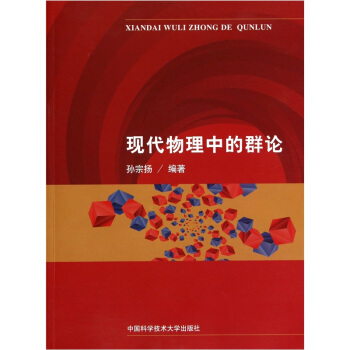
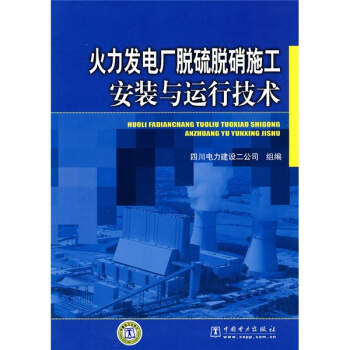
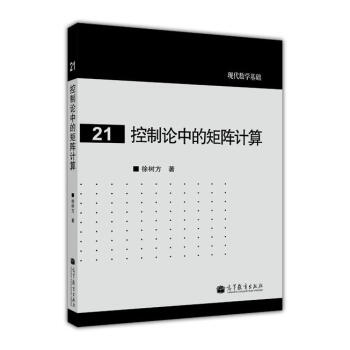
![量子场论(第2版) [Quantum field Theory Second Edition] pdf epub mobi 电子书 下载](https://pic.tinynews.org/10758693/rBEGEE-wtNsIAAAAAAAlYd1wj3cAAA7dAEwJ6AAACV5953.jpg)
![椭圆曲线 [Elliptic Curves] pdf epub mobi 电子书 下载](https://pic.tinynews.org/10825688/746c89d8-e344-44c4-9e95-826057ac43e6.jpg)
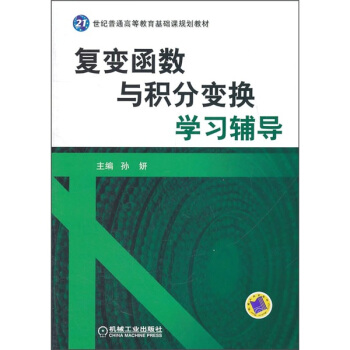

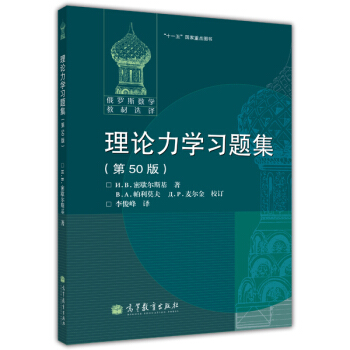
![动力系统引论 [Introduction to Dynamical Systems] pdf epub mobi 电子书 下载](https://pic.tinynews.org/11309190/563c1a9bN92aa181b.jpg)
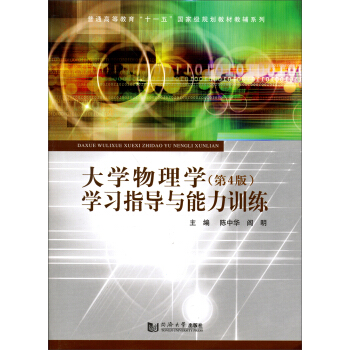
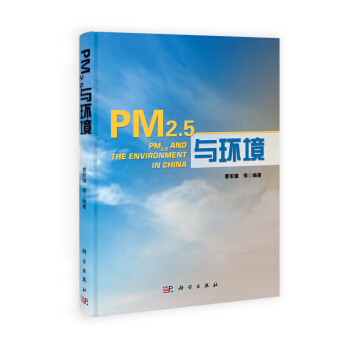
![理论力学自主学习辅导(配套高教·哈工大《理论力学1》 第七版 )/普通高等教育“十二五”规划建设教材 [Assistant to Self-Motivated Learning Theoretical Mechanics] pdf epub mobi 电子书 下载](https://pic.tinynews.org/11620786/54dddbc4N5790ad4d.jpg)
![黎曼几何和几何分析(第6版) [Riemannian Geometry and Geometric Analysis Sixth Edition] pdf epub mobi 电子书 下载](https://pic.tinynews.org/11647751/54e1b516N236b44c7.jpg)
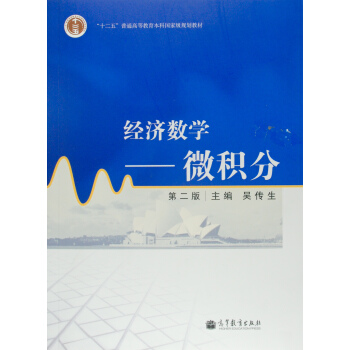
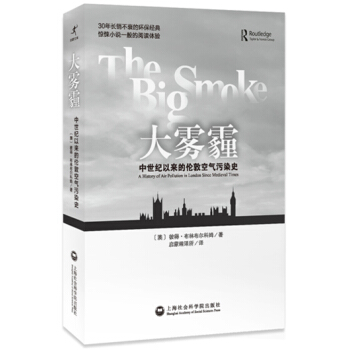
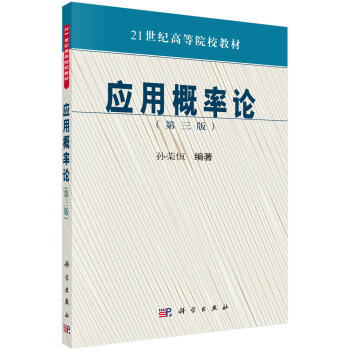
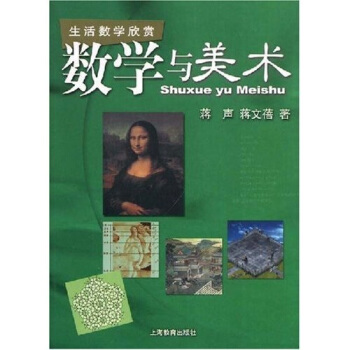
![经典英文物理教材系列:宇宙学的物理基础 [Physical Foundations of COSMOLOGY] pdf epub mobi 电子书 下载](https://pic.tinynews.org/10096503/d120df60-0ce4-449c-8c3c-98573d0e0c1a.jpg)
